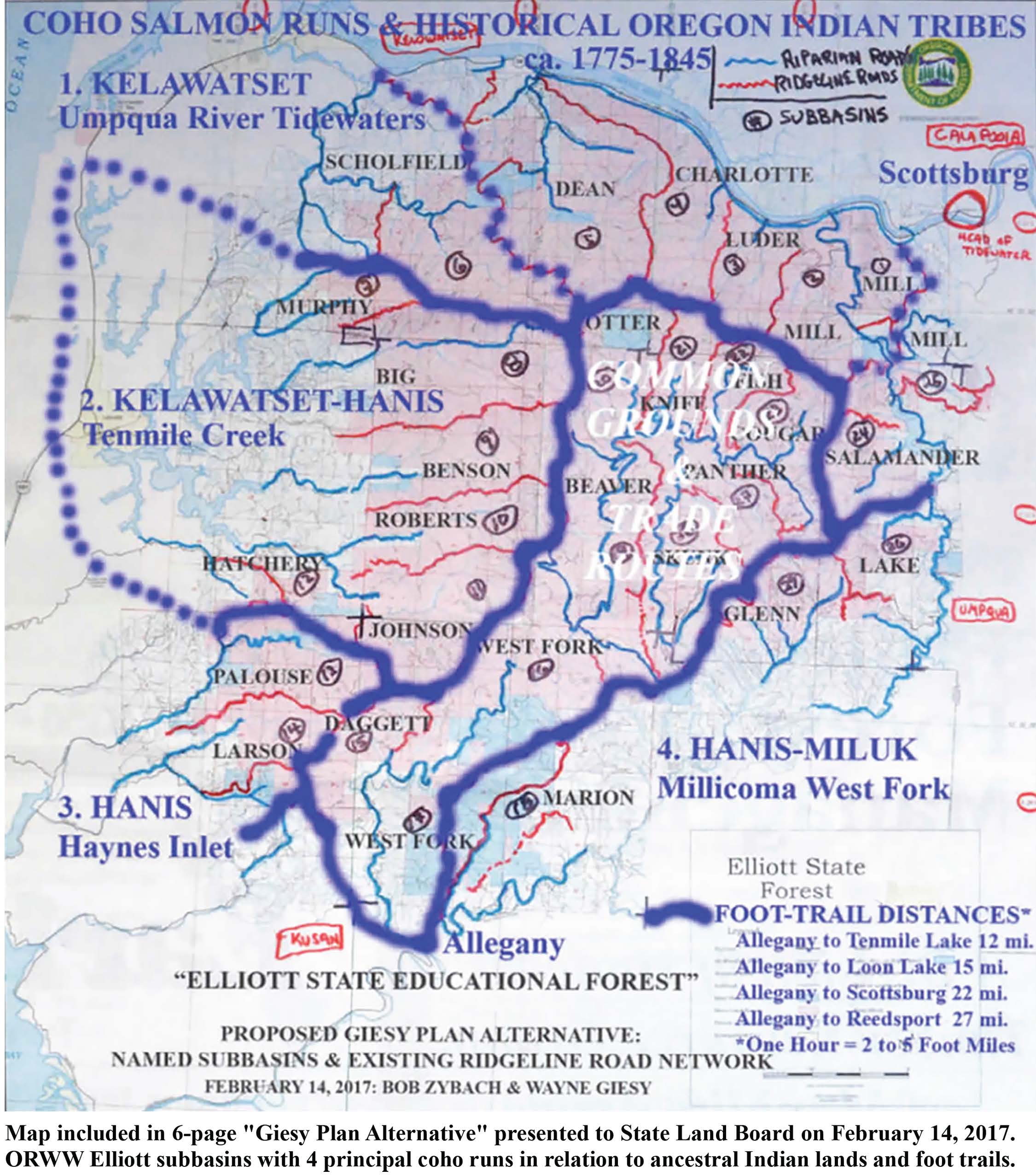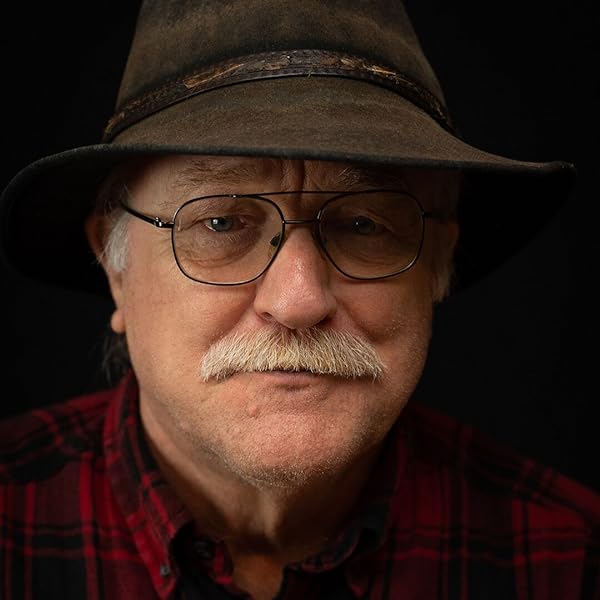Giesy Plan Alernative promises hope for all sides
The sale of the Elliott State Forest, which “decoupled” it from the Common School Fund, it has a long ominous history. The 2022
Senate Bill 1546 that sold the Elliott school lands to itself, is pending a ruling from Honorable Judge Andrew Combs in the Civil Complaint
Case No. 23CV39056 in Coos County Circuit court by Advocates for School Trust Lands (Advocates).
Advocates state, “The assumption that decoupling the forest from the Common School Fund could nullify the state's trust obligations to the common schools, as proposed in SB 1546, is at best ill-informed and at worst criminal. The irrevocable Oregon Enabling Act mandates that its terms are binding on both the United States and the State of Oregon.” They further state that it is impermissible for a trustee to purchase assets from the trust, creating a breach of trust by SB 1546. If the court invalidates the sale, it equates to breaching the state constitution.
In 1859, at statehood, Oregon was allocated more than three million acres of school trust lands. In 1930 the Elliott, Oregon’s first State Forest, was created by trading scattered parcels remaining from trust land sales for an 82,500-acre block in Coos and Douglas counties that remained in an irrevocable trust managed for the benefit of the Common School Fund. Several wildfires had reduced the older stands to under 160 years old so there is virtually no old growth. It developed into a hotbed of activism and lawsuits, so that the past 10 years there has been zero sales resulting in an overgrowth, increasing the fire risk.
The controversy surrounding the management began in 1989 with the discovery of the spotted owl within its mostly second growth trees. It was the beginning of the federally mandated HCP (Habitat Conservation Plan), followed by an environmental lawsuit stopping all harvesting in 2012. What once provided hundreds of millions of dollars to Oregon schools, was now costing money. In 2017 the Elliott Forest was valued at over $1 billion, but sold for $221 million due the severe market restrictions. In 2022, the legislature made it a research forest to be managed by Oregon State University that would raise revenue by selling carbon credits. However, OSU didn’t agree on selling carbon credits nor did they agree with the HCP plan restricting harvest. Along with tribal concerns, OSU completed its commitment in 2023 delivering the final draft of an Elliott State Research Forest Management Plan to the Oregon Department of State Lands, and backed out of managing the forest. That currently leaves the forest in the hands of the Department of State Lands (DSL) and cancels the creation of a new Elliott Research Authority state agency.
The State Land Board is holding on to preserving the Elliott as a research forest and holding meetings to manage the forest through a provisional board of directors. They requested $4.4 million in
SB 5701 to administer the program. Management under the board should result in a smaller budget and allow the Habitat Conservation Plan (HCP) plan to move forward under the OSU proposed research plan, which divided the forest into three kinds of management units: 66% is allocated as reserve forest, 17% is extensive forestry or ecological forestry developed by OSU with small patch cuts on a 60 year rotation, and 17% clear cuts in 60 year rotations.
There are drawbacks to the OSU plan that over time result in 73% of the forest getting older and 50% will continuing to get older increasing fire risk without management. There is a complex research overlay on the forest. which has morphed into a somewhat cooperative system.
The tribes would like to see more management in the reserve areas. Over time roads will be removed in the reserve areas. HCP has an 80-year growth plan and protected species will remain even if the HCP is removed. It is a stronghold for federally listed marbled murrelets, northern spotted owls, and Coho salmon.
All the money coming from timber sales goes back into research in the Elliott Forest, which the Advocates are claiming should go to schools. Right now, the wildlife conservationists seem to be leading the conversation, “if you don’t buy into the plan, don’t be on the board,” said Bob Sallinger, retired Audubon Director. But the conversation is still open. Senator David Brock Smith defends the program as the best scenario to at least get between 17k-22k board feet cut per year, which is better than no harvest. But, that isn't viewed as proper management by Bob Zybach Ph.D, Environmental Scientist.
There is a push for a new direction that would encompass all ideas and resolve the pending court case. Zybach, has worked with Wayne Giesy, David Gould, and Jerry Phillips on the
2017 Giesy Plan Alternative to sustain the Elliott, and to focus on scientific testing of HCPs before they are adopted on any state or private lands. They have produced solid numbers to prove their plan and say road maintenance and timber sales can begin immediately. “As a PhD with some expertise on the topic, I can state with some certainty that HCPs are a purely political process and need to be scientifically tested before causing any more damage to our forests and rural economies,” Zybach says. He is calling for the Elliott Forest to be redirected to the Oregon Department of Forestry to resume management for the purpose of meeting legal obligations to the Common School Fund and to local communities.
A D V E R T I S E M E N T

A D V E R T I S E M E N T
The basic research design of the “
Giesy Plan Alternative" is the paired watershed approach that OSU and ODF successfully tested on Roseburg Forest Products land on the North Umpqua. The key components of the Giesy option are that the Elliott will remain in public ownership with public access for 20 years until better informed decisions can be made regarding its longer-term ownership and management; that 40,000 acres be set-aside as “old-growth habitat” for research, education, aesthetics, and endangered species; and that 40,000 acres be actively managed for continued Common School Fund benefit, with timber sales averaging 50mmbf/year creating — by State economist estimates -- 430 needed rural jobs and $440 million for our schools. This is only 2/3 of the Elliott's annual growth of 75 mmbf/year and is the same number used in the 1988 Elliott Plan when trees were a lot smaller and 35 years younger. At the present time there is more than 2.3 billion board feet of timber on the Elliott based on the 2016 cruise, plus eight years of growth since.
All 550 miles of existing roads and trails will be maintained for safety, research, recreation and education. Research and education focus would be on carbon sequestration; spotted owl, marbled murrelet, coho, lamprey, and pine marten habitat and populations; economics; forest recreation; and forest management, and conducted locally by high school and community college students and statewide via accredited online studies. To develop accredited online courses, the Giesy Plan expands into a network started by the 501 c(3) educational nonprofit,
Oregon Websites and Watersheds Project, Inc. (ORWW) that has completed more than 40 such projects over the past 21 years conducting historical and fisheries research and working with local students and educators on the Elliott. The intent is to continue work with Southwestern Oregon Community College (SWOCC) and local high schools with a focus on the Elliott. “In that regard,” Zybach says, “we have promoted the Elliott State Educational Forest as an ideal outdoor classroom for research, education, and Common School Fund income for all Oregon students.”

The components would be the 24 named creek subbasins on the Elliott, as shown on the map. The operational approach would be to systematically select two adjacent subbasins from each of the four principal coho runs (Umpqua, Tenmile, Haynes, West Fork); one to be left “as is” — but with roads and trails maintained for public access, research, education, and recreational uses — and the other to be clearcut to the water’s edge from ridgeline to ridgeline for comparative analysis of economics, wildlife populations, water flows, wildfire risk, biodiversity, and aesthetics.
Zybach states, “The Giesy Plan would be experimental, educational, and economic in scope and would only last 20 years, at which time the results could be carefully analyzed and used as the basis for future management directions and options.” In the meantime, the plan will rescue rural communities out of sure poverty, and in the long run will settle the HCP debate for state forests with significant research to test HCPs for western Oregon. You can show your support by contacting the
State Land Board, or emailing Arin.N.Smith@dsl.oregon.gov.
--Donna Bleiler| Post Date: 2024-02-24 08:46:37 | Last Update: 2024-02-24 15:59:37 |








 The components would be the 24 named creek subbasins on the Elliott, as shown on the map. The operational approach would be to systematically select two adjacent subbasins from each of the four principal coho runs (Umpqua, Tenmile, Haynes, West Fork); one to be left “as is” — but with roads and trails maintained for public access, research, education, and recreational uses — and the other to be clearcut to the water’s edge from ridgeline to ridgeline for comparative analysis of economics, wildlife populations, water flows, wildfire risk, biodiversity, and aesthetics.
The components would be the 24 named creek subbasins on the Elliott, as shown on the map. The operational approach would be to systematically select two adjacent subbasins from each of the four principal coho runs (Umpqua, Tenmile, Haynes, West Fork); one to be left “as is” — but with roads and trails maintained for public access, research, education, and recreational uses — and the other to be clearcut to the water’s edge from ridgeline to ridgeline for comparative analysis of economics, wildlife populations, water flows, wildfire risk, biodiversity, and aesthetics.